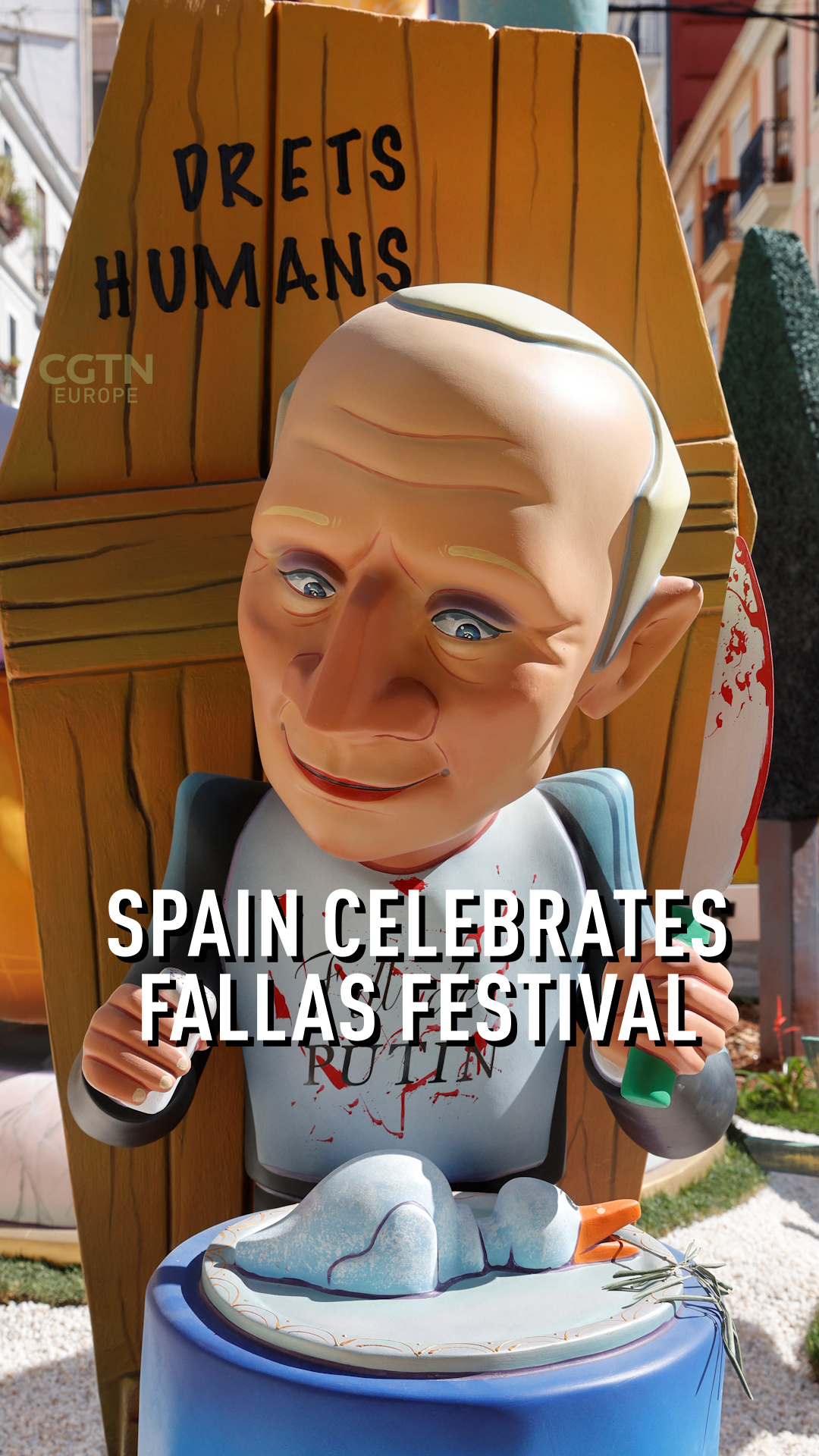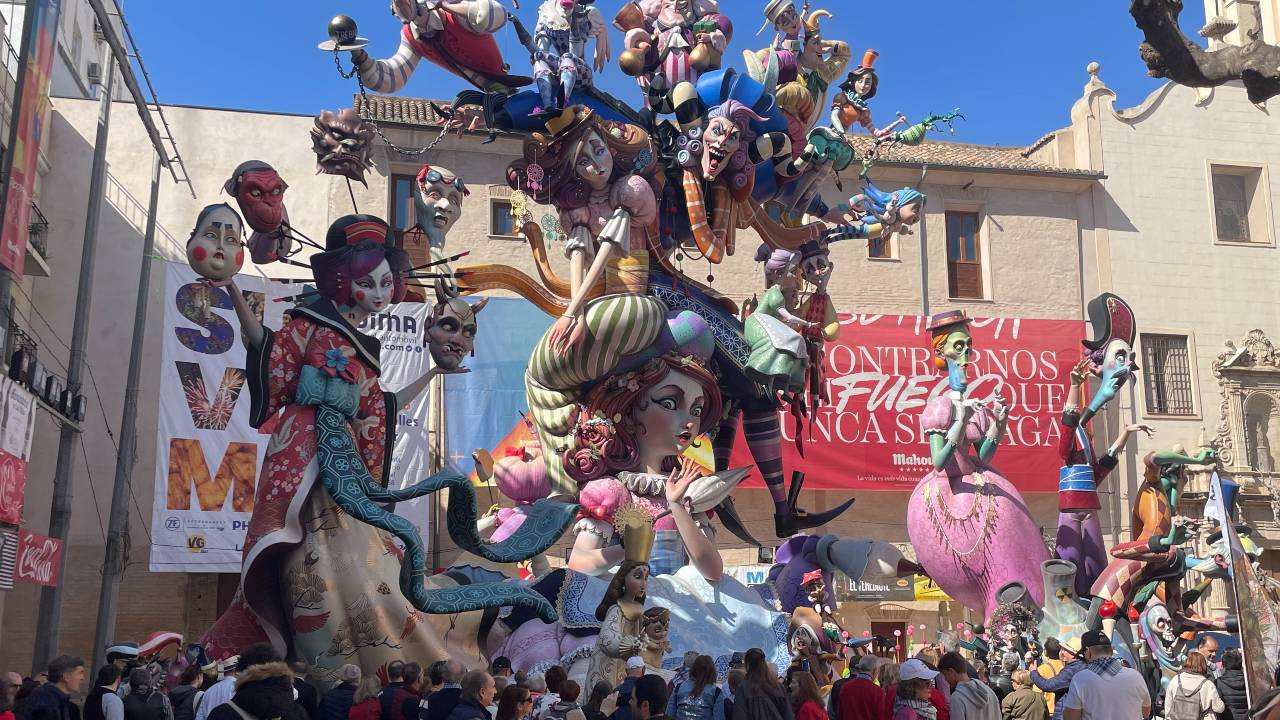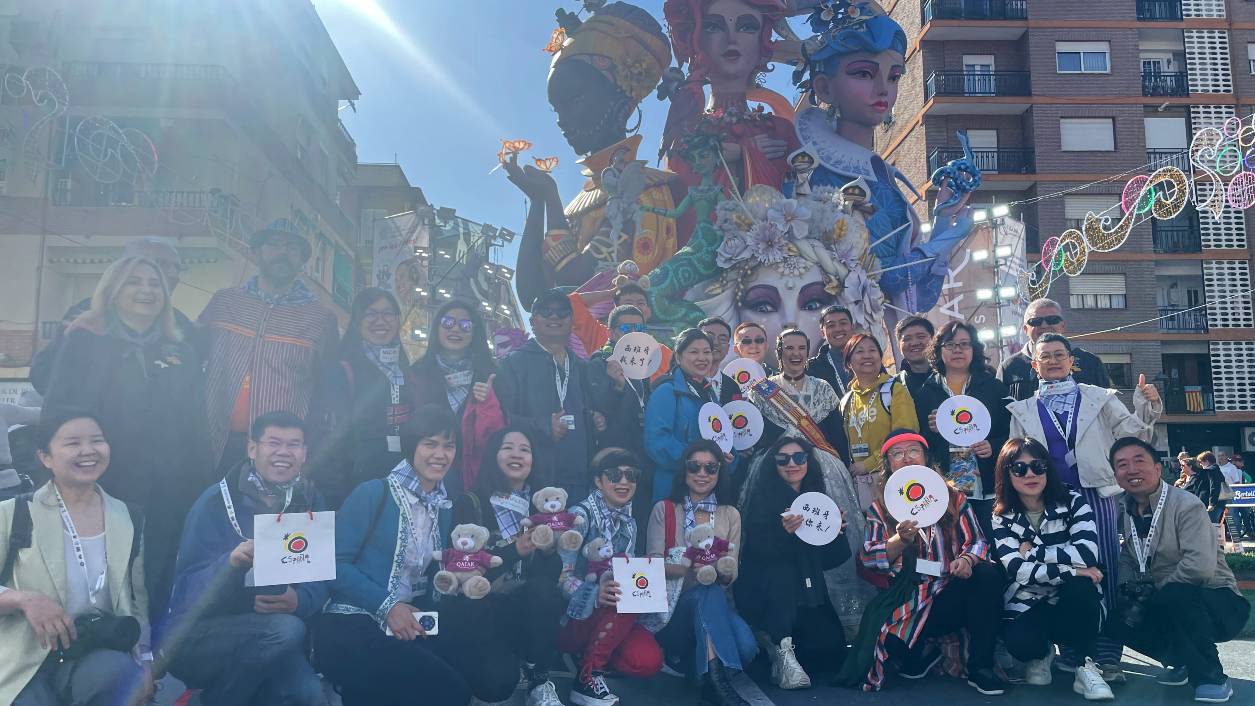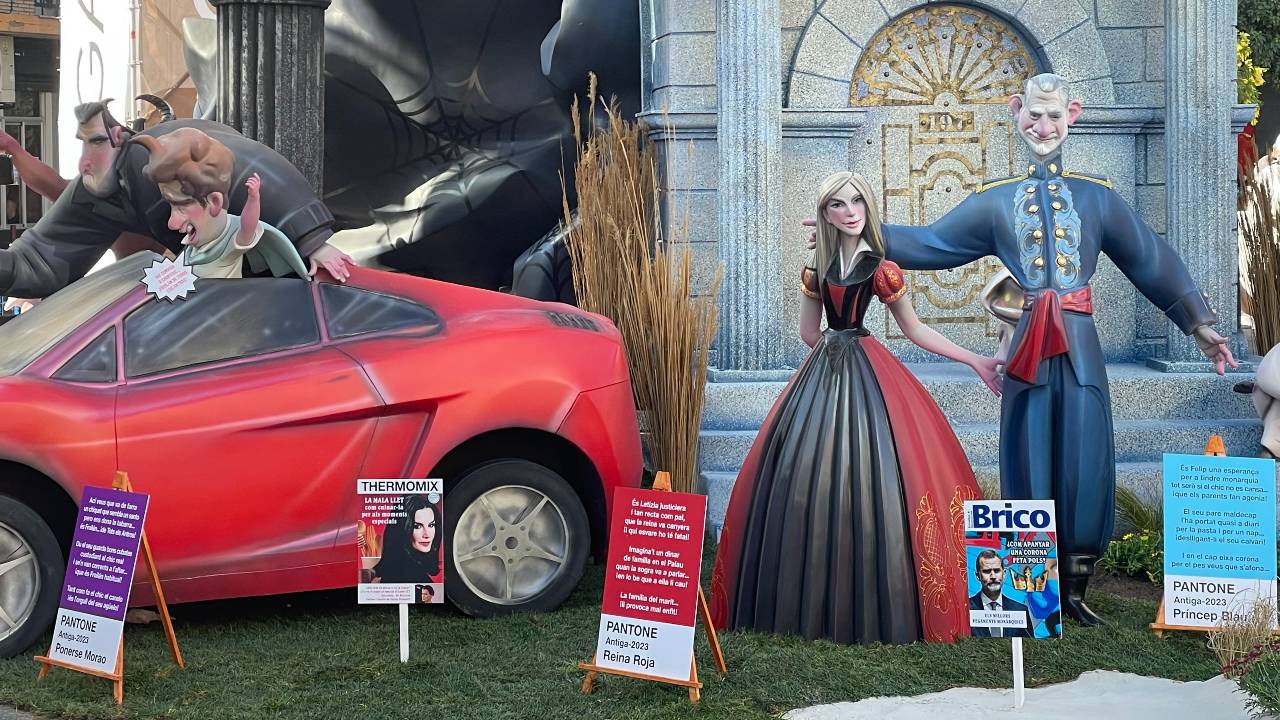01:00

It's known as Valencia's festival of fire.
'Las Fallas' is the largest celebration in the southeastern Spanish city: five days and five nights of non-stop fiesta, fireworks, historic traditions, processions, paella and fire.
What is Las Fallas?
Giant papier mache masterpieces lampoon public figures and celebrities, daily fireworks displays wow crowds of thousands, and the home of paella comes into its own.
The festival traces its origins back to 1497 when carpenters used oil lamps hung from wooden structures to light dark winter days.
With the arrival of the spring equinox, the lamps and their structures were set alight to celebrate the arrival of spring and longer days.

At Valencia's 'Las Fallas' festival, stunning papier mache figurines depict public figures for audiences of thousands. /CGTN Europe
At Valencia's 'Las Fallas' festival, stunning papier mache figurines depict public figures for audiences of thousands. /CGTN Europe
Festivities begin at 08:00 local time for 19 straight days with brass bands marching through the streets in a hail of firecrackers called the 'Desperta,' or the 'wake-up call.'
Added to UNESCO's intangible cultural heritage of humanity list in 2016, it's one way that Spain is enticing Chinese tourists back to Spain.
"Happy to be back travelling"
"Here in Valencia in Fallas we have beautiful sunshine and my emotion is like this, kind of like sunshine. I'm so happy to be back to global travel, gorgeous!" says Carol Chen, smiling.
Carol is a Chinese high-end travel specialist and is part of a group of tour operators, influencers, and journalists that's been invited to Spain by the 'Tourism Espana' group in China.
Carol is standing next to a 20-meter high 'Falla' that cost over $180,000 to make that will later burn on the final day of the festival.
A million visitors a day
Valencia's famed festival attracts tourists from around the world to see the fireworks displays, street music, and papier mache masterpieces that are built to burn.
The 2023 edition has coincided perfectly with the reopening of the Chinese tourist market, and Spain is doing everything it can to welcome high-value Chinese tourists back.
"Chinese people are so excited to travel again," continues Carol.

A group of Chinese tour operators, journalists and influencers hold 'Visit Espana' signs in front of a huge falla. /CGTN Europe
A group of Chinese tour operators, journalists and influencers hold 'Visit Espana' signs in front of a huge falla. /CGTN Europe
Miguel Angel Perez of Visit Valencia is coordinating the group.
"This is the first time that Chinese tour operators and journalists are going out from China and coming to Europe, and Spain has been the first country to organize that," he tells CGTN.
Almost a million people a day visited Valencia during the five-day fiesta in 2019, and in that same year almost a million Chinese people visited Spain, leaving more in the local economy per person than any other nation.
China is by far the largest outbound tourist market on the planet: Chinese travelers took 155 million trips in 2019, spending over $255 billion abroad.
The Chinese connection to Valencia goes back a long way to the old silk route.
A vibrant Mediterranean port city, Valencia has been trading in silk and Chinese tea for hundreds of years, and, of course, gunpowder and firecrackers were invented in China around 700BC.
'Las Fallas' generates more than $60 million for local economy
The 'Festival of Fire' in Valencia is all about welcoming in Spring and rebirth.
2023 marks the first year that it's back to almost full strength since the pandemic, and fiestas like this help Spain's tourist economy generate around 15 percent of its GDP.
Culturally such festivals are of huge value too, keeping traditions alive that sometimes date back hundreds of years.
During Fallas, many people wear their Casal Faller dress of regional and historical costumes from different eras of Valencia's history.
Rising from the ashes
'Ninots,' or figures form different 'Fallas' that often depict public figures and celebrities in a satirical way. This year the King and Queen of Spain and the wider royal family featured prominently.

The King and Queen of Spain feature as 'Ninots' in this 'Falla.' /CGTN Europe
The King and Queen of Spain feature as 'Ninots' in this 'Falla.' /CGTN Europe
Valencia football club owner Peter Lim also made a number of appearances among the 2023 ninots too - the club's fortunes this season have not made for happy football fans.
The ninots and fallas are dreamed up by neighborhood and community groups called 'Casal Faller' who compete for the best falla. Awards are given, and the best artists are much in demand.
As soon as one festival is over the 'Casal Faller' start fundraising, designing and creating for the following year.
These fallas are painstakingly conceived and crafted during the year by artists, carpenters, and sculptors. The most expensive one cost over $200,000 in 2023, only for it to be burned on the festival's grand cathartic final day.
But as local Valencians will tell you, it's what rises again from the ashes that really counts.